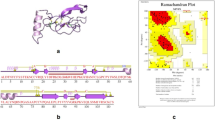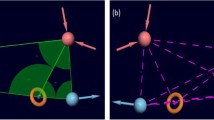Abstract
Cervical cancer remains a significant global health concern that starts in the cervix, the lower part of the uterus that connects to the vagina and is caused by the human papillomavirus (HPV), necessitating the development of effective multitargeted effective and resistance-proof therapies. In early-stage cervical cancer may not show any symptoms, however, as the cancer progresses, some people may experience- abnormal vaginal bleeding, watery or bloody vaginal discharge, pain in the pelvis or lower back, pain during sex, and frequent and painful urination. In this study, we screened the complete FDA-approved drug library using a multitargeted inhibitory approach against four cervical cancer proteins, namely mitotic arrest deficient -2, DNA polymerase epsilon B-subunit, benzimidazole-related -1, and threonine-protein kinase-1 which crucially plays its role for the in its development process. We employed the HTVS, SP and XP algorithms for efficient filtering and screening that helped to identify Mitoxantrone 2HCl against all of them with docking and MM\GBSA scores ranging from − 11.63 to − 7.802 kcal/mol and − 74.38 to − 47.73 kcal/mol, respectively. We also evaluated the interaction patterns of each complex and the pharmacokinetics properties that helped gain insight into interactions. Subsequently, we performed multiscale MD simulations for 100 ns to understand the dynamic behaviour and stability of the Mitoxantrone 2HCl -protein complexes that revealed the formation of stable drug-protein complexes and provided insights into the molecular interactions that contribute to Mitoxantrone’s inhibitory effects on these proteins and can be a better drug for cervical cancer. However, experimental studies of these findings could pave the way for therapies to combat cervical cancer effectively.







Similar content being viewed by others
Data availability
The manuscript provides all the data in figures and tables.
References
Ahmad S, et al. In-silico analysis reveals quinic acid as a multitargeted inhibitor against cervical cancer. J Biomol Struct Dyn. 2022. https://doi.org/10.1080/07391102.2022.2146202.
Ali C, Makata N, Ezenduka P. Cervical cancer: a health limiting condition. Gynecol Obstet (Sunnyvale). 2016;6(378):2161.
Alghamdi S, et al. Unveiling the multitargeted potency of Sodium Danshensu against cervical cancer: a multitargeted docking-based, structural fingerprinting and molecular dynamics simulation study. J Biomol Struct Dyn. 2023. https://doi.org/10.1080/07391102.2023.2248260.
Tripathi MK, et al. Fundamentals of molecular modeling in drug design. In: computer aided drug design (CADD): from ligand-based methods to structure-based approaches. Amsterdam: Elsevier; 2022. p. 125–55.
Yadav MK, et al. Predictive modeling and therapeutic repurposing of natural compounds against the receptor-binding domain of SARS-CoV-2. J Biomol Struct Dyn. 2022;41:1–13.
Bowers KJ, et al. Scalable algorithms for molecular dynamics simulations on commodity clusters. in Proceedings of the 2006 ACM/IEEE Conference on Supercomputing. 2006.
Choi J-W, et al. High expression of spindle assembly checkpoint proteins CDC20 and MAD2 is associated with poor prognosis in urothelial bladder cancer. Virchows Arch. 2013;463:681–7.
Sun S-C, Kim N-H. Spindle assembly checkpoint and its regulators in meiosis. Hum Reprod Update. 2012;18(1):60–72.
Burgers PM. Eukaryotic DNA polymerases in DNA replication and DNA repair. Chromosoma. 1998;107(4):218–27.
Shah AA, et al. Structure-based virtual screening, molecular docking, molecular dynamics simulation, and metabolic reactivity studies of quinazoline derivatives for their anti-EGFR activity against tumor angiogenesis. Curr Med Chem. 2023. https://doi.org/10.2174/0929867330666230309143711.
Sheikh K, et al. Consequential innovations in nature-inspired intelligent computing techniques for biomarkers and potential therapeutics identification. In: Raza K, editor., et al., Nature-inspired intelligent computing techniques in bioinformatics. Singapore: Springer; 2022. p. 247–74.
Singh AP, et al. Computational screening and MM/GBSA-based MD simulation studies reveal the high binding potential of FDA-approved drugs against Cutibacterium acnes sialidase. J Biomol Struct Dyn. 2023. https://doi.org/10.1080/07391102.2023.2242950.
Tarique M, et al. Novel severe acute respiratory syndrome coronavirus 2 (SARS-CoV2) and other coronaviruses: a genome-wide comparative annotation and analysis. Mol Cell Biochem. 2021;476:2203–17.
Elowe S, Bolanos-Garcia VM. The spindle checkpoint proteins BUB1 and BUBR1:(SLiM) ming down to the basics. Trends Biochem Sci. 2022. https://doi.org/10.1016/j.tibs.2022.01.004.
He Y, et al. Targeting PI3K/Akt signal transduction for cancer therapy. Signal Transduct Target Ther. 2021;6(1):425.
Wicherska-Pawłowska K, Wróbel T, Rybka J. Toll-like receptors (TLRs), NOD-like receptors (NLRs), and RIG-I-like receptors (RLRs) in innate immunity. TLRs, NLRs, and RLRs ligands as immunotherapeutic agents for hematopoietic diseases. Int J Mol Sci. 2021;22(24):13397.
Ahmad S, et al. Multitargeted molecular dynamic understanding of butoxypheser against SARS-CoV-2: an in silico study. Nat Product Commun. 2022;17(7):1934578X221115499.
Ahmad S, et al. Reporting dinaciclib and theodrenaline as a multitargeted inhibitor against SARS-CoV-2: an in-silico study. J Biomol Struct Dyn. 2023;41(9):4013–23.
Ahmad S, Raza K. Identification of 5-nitroindazole as a multitargeted inhibitor for CDK and transferase kinase in lung cancer: a multisampling algorithm-based structural study. Mol Divers. 2023. https://doi.org/10.1007/s11030-023-10648-0.
Ahmad S, et al. Illustrious implications of nature-inspired computing methods in therapeutics and computer-aided drug design. In: Raza K, editor., et al., Nature-inspired intelligent computing techniques in bioinformatics. Singapore: Springer; 2022.
Ahmad S, et al. Multisampling-based docking reveals Imidazolidinyl urea as a multitargeted inhibitor for lung cancer: an optimisation followed multi-simulation and in-vitro study. J Biomol Struct Dyn. 2023. https://doi.org/10.1080/07391102.2023.2209673.
Alghamdi YS, et al. Unveiling the multitargeted potential of N-(4-Aminobutanoyl)-S-(4-methoxybenzyl)-L-cysteinylglycine (NSL-CG) against SARS CoV-2: A virtual screening and molecular dynamics simulation study. J Biomol Struct Dyn. 2023;41(14):6633–42.
Alturki NA, et al. In-silico screening and molecular dynamics simulation of drug bank experimental compounds against SARS-CoV-2. Molecules. 2022;27(14):4391.
Ramlal A, et al. From molecules to patients: the clinical applications of biological databases and electronic health records. In: Translational bioinformatics in healthcare and medicine. Cambridge: Academic Press; 2021. p. 107–25.
Release S. LigPrep Schrödinger. New York: LLC; 2017.
Jorgensen WL, Tirado-Rives J. The OPLS [optimized potentials for liquid simulations] potential functions for proteins, energy minimizations for crystals of cyclic peptides and crambin. J Am Chem Soc. 1988;110(6):1657–66.
Shivakumar D, et al. Prediction of absolute solvation free energies using molecular dynamics free energy perturbation and the OPLS force field. J Chem Theory Comput. 2010;6(5):1509–19.
Shelley JC, et al. Epik: a software program for pK a prediction and protonation state generation for drug-like molecules. J Comput Aided Mol Des. 2007;21:681–91.
Greenwood JR, et al. Towards the comprehensive, rapid, and accurate prediction of the favorable tautomeric states of drug-like molecules in aqueous solution. J Comput Aided Mol Des. 2010;24(6–7):591–604.
Rose PW, et al. The RCSB protein data bank: integrative view of protein, gene and 3D structural information. Nucleic Acids Res. 2016;2016:1000.
Yang M, et al. Insights into mad2 regulation in the spindle checkpoint revealed by the crystal structure of the symmetric mad2 dimer. PLoS Biol. 2008;6(3):e50.
Suwa Y, et al. Crystal structure of the human Pol α B subunit in complex with the C-terminal domain of the catalytic subunit. J Biol Chem. 2015;290(23):14328–37.
D’Arcy S, et al. Defining the molecular basis of BubR1 kinetochore interactions and APC/C-CDC20 inhibition. J Biol Chem. 2010;285(19):14764–76.
Zhang C, et al. Structural basis of STING binding with and phosphorylation by TBK1. Nature. 2019;567(7748):394–8.
Maestro S. Maestro. Schrödinger. New York: LLC; 2020.
Release S. Schrödinger suite 2017–1 protein preparation Wizard Epik Schrödinger. New York: LLC; 2017.
Alzamami A, et al. Hemi-Babim and fenoterol as potential inhibitors of MPro and papain-like protease against SARS-CoV-2: an in-silico study. Medicina. 2022;58(4):515.
Karwasra R, et al. Macrophage-targeted punicalagin nanoengineering to alleviate methotrexate-induced neutropenia: a molecular docking, DFT, and MD simulation analysis. Molecules. 2022;27(18):6034.
Kaul T, et al. Probing the effect of a plus 1bp frameshift mutation in protein-DNA interface of domestication gene, NAMB1, in wheat. J Biomol Struct Dyn. 2019;38(12):3633–47.
Jacobson MP, et al. A hierarchical approach to all-atom protein loop prediction. Proteins. 2004;55(2):351–67.
Release S. Receptor grid generation Schrödinger. New York: LLC; 2019.
Release S. Glide: Schrödinger. New York: LLC; 2020.
QikProp S. Schrödinger release 2017. New York: Maestro LLC; 2017.
Lipinski CA. Lead-and drug-like compounds: the rule-of-five revolution. Drug Discov Today Technol. 2004;1(4):337–41.
Genheden S, Ryde U. The MM/PBSA and MM/GBSA methods to estimate ligand-binding affinities. Expert Opin Drug Discov. 2015;10(5):449–61.
Mark P, Nilsson L. Structure and dynamics of the TIP3P, SPC, and SPC/E water models at 298 K. J Phys Chem A. 2001;105(43):9954–60.
McDonald I. NpT-ensemble Monte Carlo calculations for binary liquid mixtures. Mol Phys. 1972;23(1):41–58.
Neuhaus O, Kieseier BC, Hartung H-P. Mitoxantrone (Novantrone®) in multiple sclerosis: new insights. Expert Rev Neurother. 2004;4(1):17–26.
Acknowledgements
The authors are thankful to the deanship of scientific research at Najran University for funding this work under the research priorities and Najran research funding program (NU/NRP/MRC/12/8).
Funding
This study was supported by Ministry of Education—Kingdom of Saudi Arabi, NU/NRP/MRC/12/8.
Author information
Authors and Affiliations
Contributions
MAA and SAA: Conceptualisation, Data collection/curation, writing the first draft; QA and AA: Data collection/curation, analysis; RSA and LSA: extensive editing of the first draft; MMR: Supervision, reviewing and editing, AIA; extensive editing of the first draft, MMA: reviewing and editing.
Corresponding author
Ethics declarations
Conflict of interest
The authors declare no competing or conflicts of interest.
Additional information
Publisher's Note
Springer Nature remains neutral with regard to jurisdictional claims in published maps and institutional affiliations.
Rights and permissions
Springer Nature or its licensor (e.g. a society or other partner) holds exclusive rights to this article under a publishing agreement with the author(s) or other rightsholder(s); author self-archiving of the accepted manuscript version of this article is solely governed by the terms of such publishing agreement and applicable law.
About this article
Cite this article
Alshehri, M.A., Asiri, S.A., Alzahrani, A. et al. Multitargeted inhibitory effect of Mitoxantrone 2HCl on cervical cancer cell cycle regulatory proteins: a multitargeted docking-based MM\GBSA and MD simulation study. Med Oncol 40, 337 (2023). https://doi.org/10.1007/s12032-023-02203-6
Received:
Accepted:
Published:
DOI: https://doi.org/10.1007/s12032-023-02203-6




